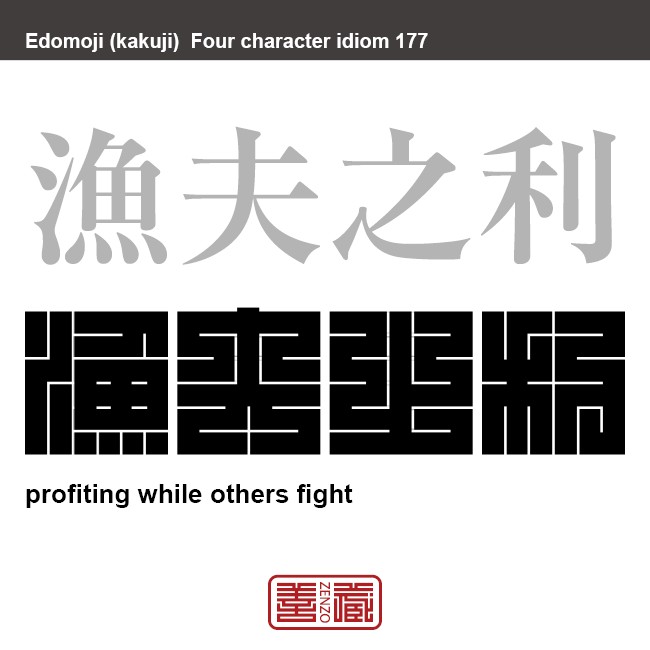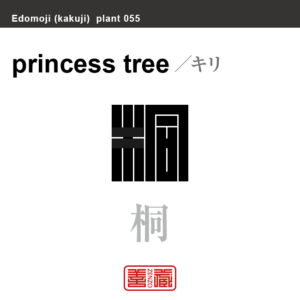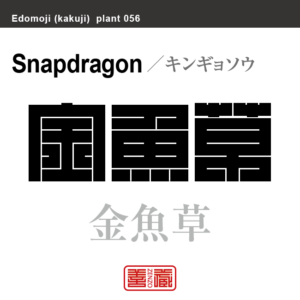漁夫之利 ぎょふのり 角字でことわざ、四字熟語

漁夫之利
ぎょふのり
Gyofu-No-ri
profiting while others fight
Unicode: [漁_0x6F01][夫_0x592B][之_0x4E4B][利_0x5229]
両者が争っているすきに、第三者が骨を折らずにその利益を横取りするたとえ。
双方が激しく争い、譲ることが無ければ、お互いに疲弊し、介入してきた第3勢力に全てを奪われてしまうという戒め。
また、争い合う勢力があれば、双方が疲弊するまで待ち、最終的に両方を倒す事ができるという戦術。
「戦国策・燕策」の次のような逸話が由来
ひなたぼっこをしていたカラス貝の肉をシギがついばんだ。カラス貝は殻を閉じて、くちばしをはさんだ。
シギが「今日雨が降らないで、明日も雨が降らなければ、死んだカラス貝ができるだろう」と言うと、からす貝も負じと「今日くちばしが出ないで、明日も出なければ、死んだシギができるだろう」とシギに言った。
両方とも互いにゆずらず、放すことを承知しない。
すると通りかかった漁師が、身動きの取れない貝とシギを、両方いっしょに捕らえた。
角字とは?
江戸時代に誕生した角字は、正方形のグリッド内にほぼ水平・垂直のラインのみで文字(漢字)が表現されるグラフィックアートです。
正方形という限られた空間の中に、あらゆる文字を閉じ込めようとするグラフィックデザインは、前述した、ミニマムな物に対する日本人特有のこだわりが随所に感じられます。
そのシンプルで有りながら、奥深い「角字」は多くの日本人を魅了し、お祭りで着る半被や印半纏(しるしばんてん)と言われる着物や、商標、印鑑、家紋、看板デザインなどに今日まで数多く使用されてきました。
What is Kakuji?
There is a style of penmanship called “Kakuji” in Japan. Edo-born Kakuji is a graphicart that expresses letters (kanji) with almost horizontal and vertical lines only.
The design which bases on many straight lines seems simple, or too plain even at its first glance; yet this beautiful artistic penmanship that encompasses the aesthetic of the Japanese in the Edo era, also known as “Iki”, and playfulness has long been inherited to this day, thanks to the masteries’ long years of efforts in training and refinement.
Kakuji with its simplicity and depth is used for designs such as trademark, hanko stamp, family crest and signboard.































































 2文字コード:MZ 3文字コード:MOZ 数字:508 ITU:258 ccTLD:.mz
2文字コード:MZ 3文字コード:MOZ 数字:508 ITU:258 ccTLD:.mz







































































































































